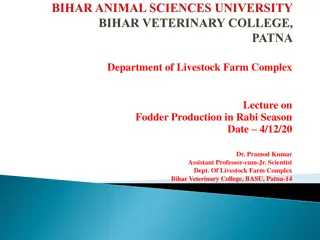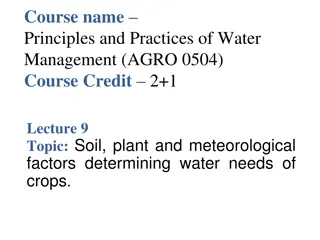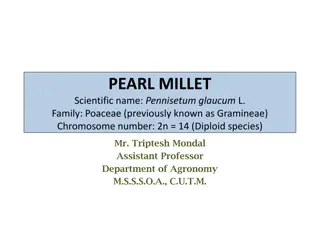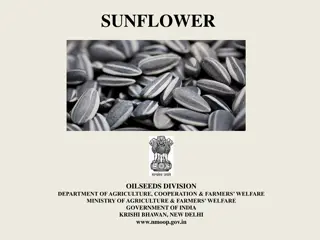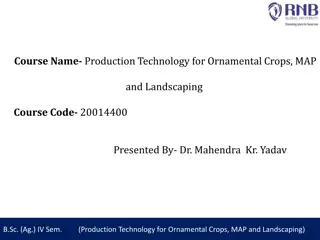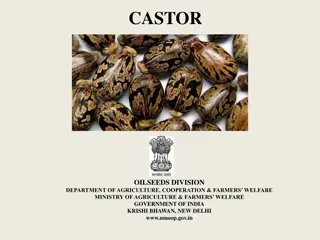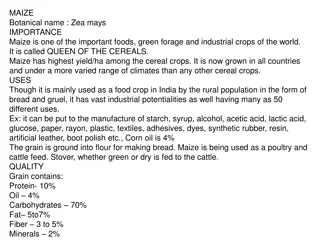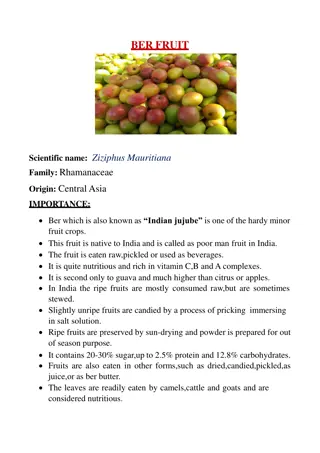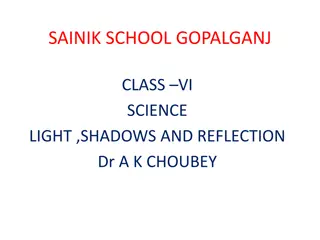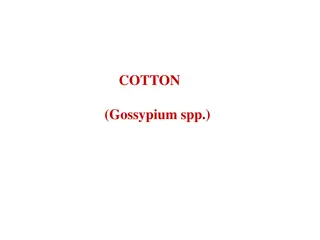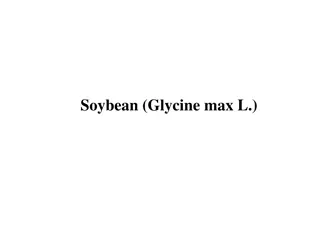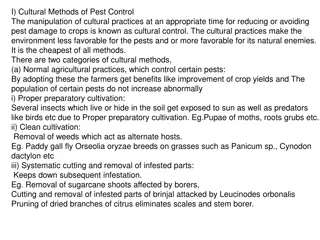Regulation of Light in Protected Crop Cultivation: A Comprehensive Overview
Considerations for selecting light sources in greenhouse cultivation include total energy emitted, efficiency, wavelengths, cost, and life expectancy. Options like incandescent, fluorescent, and High Intensity Discharge lamps offer different advantages and efficiencies for supporting plant growth in protected environments.
Download Presentation

Please find below an Image/Link to download the presentation.
The content on the website is provided AS IS for your information and personal use only. It may not be sold, licensed, or shared on other websites without obtaining consent from the author. Download presentation by click this link. If you encounter any issues during the download, it is possible that the publisher has removed the file from their server.
E N D
Presentation Transcript
Center for Smart Agriculture Protected cultivation of vegetable crops Module 3: Control of Light Session 8: Regulation of light in protected crop cultivation
Regulation of light in protected crop cultivation Before selecting a light source for greenhouse lighting, numerous considered.Among these are the 1. Total energy emitted by the lamp, 2. Efficiency (% of electrical energy converted to light energy), 3. wavelengths emitted 4. Cost, life expectancy and the fixtures required. factors should be
1. Incandescent lamps (tungsten-filament):- Incandescent lights do not require ballasts like other more expensive plant lights, but they generally do not provide sufficient light for most greenhouse applications. A large portion of the radiation given off by these lamps is in the form of infrared (heat). Because of this, their efficiency rating is only 7%. Lamps range from 40 to 500 watts.
Life span ranges from 750 to 1000 hours. In order to produce enough light for effective photosynthetic large number of these lights would be required. lighting, a
2.Fluorescent lamps Fluorescent lamps are more efficient than incandescent lamps (20% efficiency) and provide their light over a broader spectrum (more in the blue region) than incandescent lamps. Light output also declines as fluorescent lamps age, falling to about 60% after 10,000 hours.
Fluorescent lamps are available in three load types: normal output 400 mA (normal output), 800 mA (high output), and 1500 mA (very high output). One disadvantage of fluorescent lamps is their relative bulk in relation to output. These lamps are most commonly used in growth chambers and seed germination rooms. They are rarely used to produce crops in greenhouses.
3. High Intensity Discharge (HID) Lamps Now a days, the HID lamps are preferred types for the final stages of the crop growth in the greenhouse. These are the most commonly used lamps for supplemental lighting in greenhouses. The light intensities and efficiencies obtained by high intensity discharge are higher than either incandescent of fluorescent lamps.
Numerous types off bulbs are available for use in HID lamps such as high pressure mercury, metal halide, low pressure sodium and high pressure mercury. A. High-pressure mercury bulbs: Have emission spectrum similar to fluorescent lamps but with a greater concentration of their radiation being emitted in the red region.
Light energy is produced by these lamps using a two-step process. First the filament gives off UV light. This UV radiation excites a phosphor powder in the tube. This powder fluoresces and gives off visible light. Because of this two-step process, these lamps have an efficiency of only 13% and have a lifespan of about 10,000 hours.
B. High-pressure metal halide bulbs: cost more than high-pressure mercury bulbs and have a shorter life span than high- pressure mercury bulbs. However, they have a broader emission spectrum than mercury bulbs. Their efficiency is 20%. These bulbs have a lifespan of 8,000 to 15,000 hours.
C. Low-pressure sodium bulbs: Have an efficiency of 27% and have a lifespan of 18,000 hours. However, these bulbs have very narrow emission spectrums. This narrow emission spectrum can cause adverse effects on crop development.
D High-pressure sodium lamps: The most common type of bulb used for supplemental lighting in greenhouses. They have a broader emission spectrum than low-pressure sodium bulbs and are cheaper than mercury bulbs. These bulbs have efficiency of 25% and a lifespan of 24,000 hours.
4. LED The newest type of grow lights use LED technology. LED grow lights popularity with advancements in LED technology. Many growers favor LED lights because they require significantly less energy to run while producing equivalent yields to HPS lights. have increased in
One major advantage to the LED lights is the small size. LED lights are only a few inches in diameter and are easy to mount. According to LED manufacturers, LED grow lights maximize blue and red light to provide and excellent balance for plants. They do not have much green-yellow light and generally there is no light produced except that which promotes photosynthesis.






